ABOUT CORK
The cork tree is typical of the western Mediterranean region. It is known as Quercus suber L., and belongs to a sub-group of European and Asian oak species (Cerris). One of its most distinctive properties is the outer homogeneous layer that grows around its trunk, called cork. The continual phellogen regeneration causes the homogeneity of this layer during its lifespan. Contrary to other species, with limited phellogen production capacity, the cork oak tree keeps regenerating over and over again.
As stated before, the words “waste” and “cork tree” don’t go together. Cork trees might be one of the most versatile trees ever to grace the world. The acorn, its fruit, serves as food for other animals, to further seed new trees, and to produce culinary oil. Moreover, the leaves can be used as natural fertilizers and fodder for the animals. The tree’s pruning results in vegetal coal and wood, useful for many immediate communities and post-processed products. The cork tree oils also find an interesting application through its chemical properties, such as directly natural beauty products.

Montado
The cork tree is very well adapted to the Mediterranean climate – thriving in summer droughts and the region’s relatively mild winters. It is present around the Mediterranean basin, but most of its cultivation area is located in the Iberian Peninsula, split between Portugal and Spain. The forest Montado area is also present in other surrounding countries, although with less expression. Of the total 2,139,942 ha of cork forest montado, Morocco has 18% of the global Montado area; Tunisia 4%, and France and Italy each have 3%.
Most of the Portuguese Montado is located in the south region of Portugal. Alentejo ranks 1st place in the total cork forest area in national territory, comprising 84% of the forest fields. The Center and Algarve areas come up next, with 6% and 5% respectively; Lisbon and Tejo Valley and North come in last, representing 3% and 2% of cork tree forest area (APCOR, 2016).
Although scattered around the Mediterranean and particular areas in each country, the tree is very resilient and resistant. Its lifespan can go up to 200 years, even with successive cork layer stripping’s. The cork can be extracted from the tree’s outer layer every nine years without causing any harm to the Cork tree. That means a tree can have its cork stripped safely about 15 times during its lifespan. Not only is it durable and resilient, the fact that it maintains its foliage throughout the year means its cycle of photosynthesis lasts much longer than other trees. One tree can reach from 32 up to 49 ft in height (when adult) and withstand many variable climatic conditions.
Discover The Art of Cork Harvesting
The process of cork extraction commonly referred to as “descortiçamento” is a very skilled task. It’s a carefully laid out procedure, with several steps in which the cork is extracted from the cork tree with a special machete. It has been passed on by generations of men and women specialized in doing this for a living, requiring manual precision and experience.
Cork’s life cycle begins with this extraction process. During the Summer months of May to August, the harvest takes place. These are months where the cork’s growth is at its highest. Although it seems somewhat straightforward, it needs special attention to detail given the tree’s development’s particular requirements.
It takes 25 years until the first cork can be extracted from a Cork tree. Each trunk needs to reach 27,5 inches in diameter and 51 inches of height from the ground level. From this stage onward, the tree can produce cork every nine years for about a century and a half.

Cork Harvesting Stages
Discover the sustainable journey of cork harvesting and its benefits for the environment
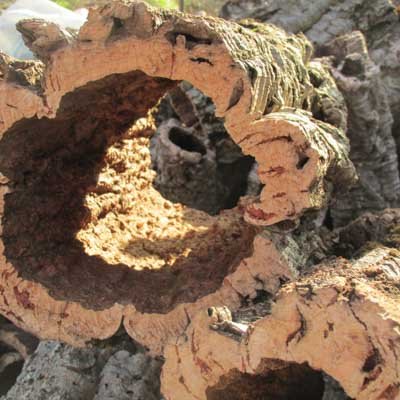
Stage 1: VIRGIN CORK
The first extraction is called desbóia. The cork retrieved from this first strip is irregular, tough, and very difficult to work with. It is also commonly known as
virgin cork . It will be used for purposes such as decorative panels, flower pot vases, animal hides and other applications.
After removal, the tree is tagged with the extraction year, so the workers can know when to get back to it to extract more cork.
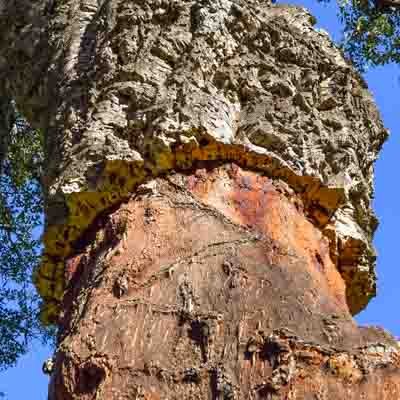
Stage 2: SECUNDEIRA
The second extraction of the cork tree, known as secundeira, takes place after an initial waiting period of seven to nine years since the first harvest. This subsequent cork is more malleable and tends to have a more uniform appearance compared to the cork obtained during the first extraction. However, despite these improved characteristics, it still does not attain the highest quality level of cork that can be harvested from the tree.
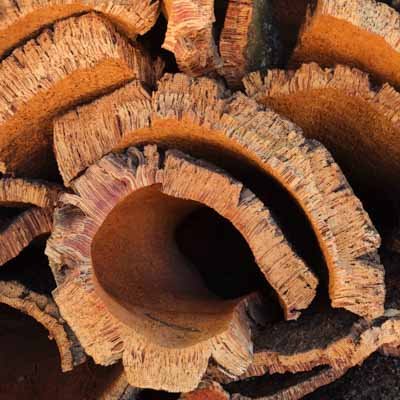
Stage 3: AMADIA
The third harvest marks the beginning of the material’s maturity and highest level of quality. From this stage forward, every nine years, the harvested cork is the best quality possible. This is the cork used in the manufacture of the best natural cork stoppers used to age the best wines worldwide. This cork is designated by amadia or reproduction cork.
Cork characteristics
Cork is an exceptional natural material sourced from the outer bark of the Quercus Suber tree. As a completely plant-based and 100% organic substance, cork offers a range of unique properties that distinguish it from other wood materials. Its versatility is unparalleled, making it suitable for a diverse array of applications. Whether utilized for insulation, flooring, or as a natural decorative feature in residential or commercial spaces, cork’s adaptability is remarkable. A standout characteristic of cork is its exceptional thermal insulation capabilities, rendering it an ideal choice for the construction industry. Furthermore, cork is known for its durability, water resistance, and fire resistance. Coupled with its eco-friendly and sustainable nature, it is clear why cork has become increasingly popular. In conclusion, cork represents an excellent option for those seeking a natural and versatile material that delivers numerous advantages.

Since more than 50% of its volume is air, it is incredibly light. It weighs about 0,16 grams per cubic centimetre.
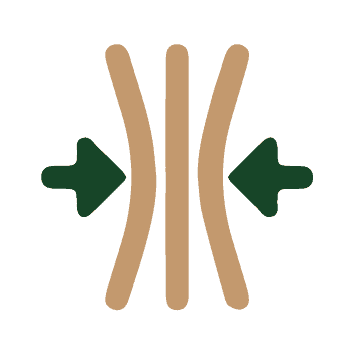
Elastic
Cork can be compressed to about half of its width without losing any flexibility features. It returns to its natural shape after decompression.

Waterproof
Pure cork is completely waterproof and mostly impervious to gases, thanks to its composition and cellular structure.

Thermal insulation
Cork cellular structure allows to absorb the heat and manage to preserve it for more extended periods of time.

Recyclable
Perhaps one of the biggest strengths of cork – it is recyclable and environment-friendly. From the tree to the end-product.

Hypoallergenic
Cork effectively blocks allergens, it is a great choice for individuals with asthma and sensitivities to dust and airborne particles.
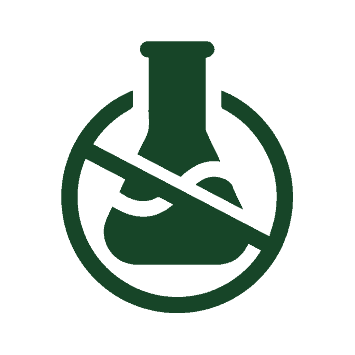
Nontoxic
One of the most important cork characteristics is nontoxic. It does not release any dangerous compounds.

Fire resistant
Due to it's unique structure, cork does not spread flame nor does it release toxic gases during the process of combustion.

Humidity balancer
Cork material is a natural humidity balancer thanks to the unique honeycomb-lattice structure formed between its cells.

Acoustic insulation
From creative studios to offices, dining establishments, and bars – the sound management capabilities of cork are highly effective.
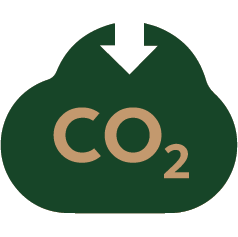
Carbon negative
For every ton of cork produced, cork forests capture about 73 tons of CO2, making them essential in reducing the greenhouse effect.

Anti-static
Cork products are known for their anti-static properties, making them ideal for applications where static electricity is a concern.
Source: APCOR


